Face-Off: Resident Evil 6 Remastered
1080p60 PC port or something more?
It's exciting times for fans of Resident Evil. Remastered versions of the last three series entries are on their way to current-gen systems, while a remake of the second game is also in development. Resident Evil 6 is the first of these titles to land, and the PS4 and Xbox One releases bring upgrades to both resolution and frame-rate over the last-gen versions. With the recent GameCube remakes capped at 30fps, we were concerned that Capcom would go down the same route for the other titles in the series. Thankfully, that isn't the case for Resident Evil 6, which hands in a superb 1080p60 experience. But aside from resolution and frame-rate boosts, just how far does the remastering process extend across the game?
The PC version provides us with a solid base for comparison, alongside the Xbox 360 and PS3 originals. The PC game provides the ability to scale up both resolution and frame-rate but beyond that, graphical upgrades are thin in the ground. A boost to image quality is delivered by FXAA3HQ anti-aliasing, allowing for a crisper and clearer presentation. However, asset quality and effects work remains the same.
And it's this version that PS4 and Xbox One remasters appear to be based on. Resolution is native 1080p on both consoles, though a different post-process solution handles anti-aliasing duties, with what looks like an MSAA-like pass applied underneath. However, in terms of overall image quality, the end result looks virtually identical to the PC game in motion, with just a touch less coverage across parts of the scene.
The core assets and effects work remain unchanged, though there are some variances in the way lighting is deployed. In an early scene, light from the street lamps is clearly cast onto the walls inside an abandoned building on PS4 and Xbox One, but this is missing on the other platforms. A little later on, a view of the road shows cars illuminated by lights inside on the PC game, an effect that is absent in all console versions old and now. Yes, we're in extreme nit-pick territory here.
Despite the lack of tangible art upgrades, the improvement in graphical quality is quite sensational when compared directly to the 720p last-gen console releases. On the Xbox 360 and PS3, the lower resolution and post-process edge filter tends to blur over texture detail and often gives the game a soft and slightly murky look in dark scenes - something we don't see in the PS4 and Xbox One remasters. Here, native 1080p resolution allows for more detail to be extracted from the highest quality textures across the game, while the use of a much more refined anti-aliasing solution avoids heavy blurring over the artwork. As such we see a much cleaner and clearer presentation that is still respectful to the original artistic look of the original, but without some of the technical limitations that sometimes distracted during gameplay.
Of course there are downsides to Capcom simply porting across the original art and effects work, without making any improvements in these areas. For the most part, texture quality was designed around a 720p presentation and often the art can present as appear rather blurry and almost pixelated when stretched across higher resolution geometry. This is particularly noticeable across environmental assets. However, characters fare much better, and the core artwork in this area holds up pretty well in comparison.
Visually, one area that does see a dramatic change is the default field of view, which is opened up considerably compared to the original game. This leads to more of the characters and surrounding environment shown on screen as you gun down the undead and infected, and also provides the game with a look more in keeping with the Resident Evil Revelations titles.
Here we get the feeling that Capcom is trying to standardise the presentation across the series - and in gameplay terms, the extra screen space suits the action-focused nature of the game. However, we also feel that the more constrained field of view of the original release created a better sense of tension and horror by limiting just how much you can see. Thankfully, Capcom understood that purists may not like the change, and it's possible to adjust the field of view so that it matches the original release. [UPDATE 5/3/16 11:36am: with the latest patch installed, it's also possible to adjust the field of view on PS3, 360, and PC to match the PS4 and Xbox One remasters.]

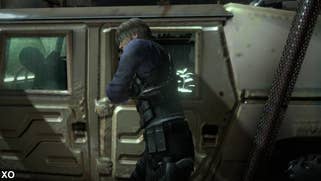
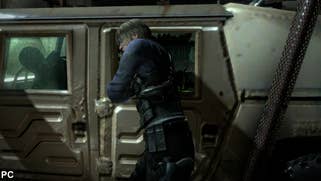

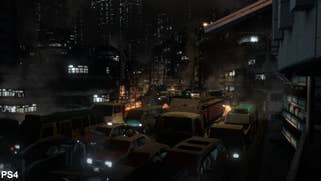

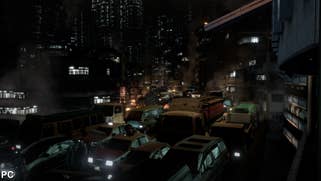

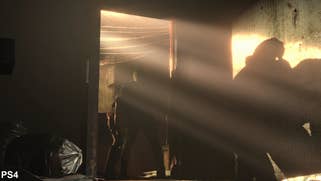
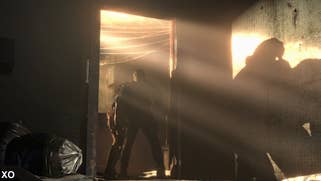
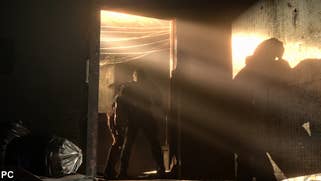
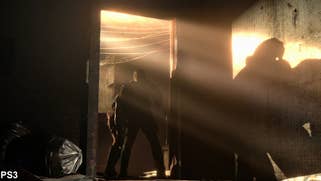
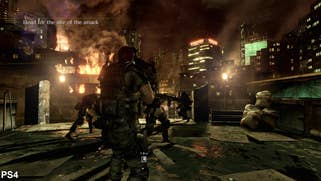

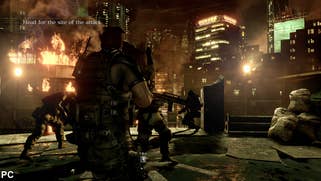









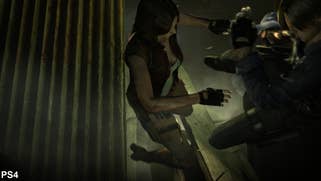

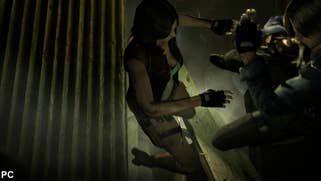
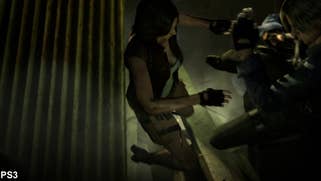

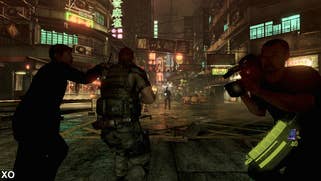


Where the PS4 and Xbox One conversions really shine is with regards to performance. While the series has always served up an immersive experience that felt fun to play at 30fps, making the jump to 60fps transforms the feel of the gameplay. Since Resident Evil 4, shooting continues to play a central part in the series, and here the doubling of frame-rate alone leads to smooth motion and slick controls that offer more responsiveness and precision than before.
In the case of Resident Evil 6, both 360 and PS3 versions suffer from near constant frame-rate drops which often lend the action a somewhat jerky look and feel that impacts upon the quality of the experience. Uneven frame-times lead to frequent variances in controller response and makes aiming harder than it needs to be. Moving to a 60fps set-up on PS4 and Xbox One eliminates all of these issues, with a combination of consistently and extra fluidity helping to get the most out of the action-heavy focus favoured by Capcom for the game. Sections which previously languish in the mid-twenties or below now operate at 60fps, and the difference is huge.
Both consoles hit a solid 60fps for extended periods of time, but only the PS4 manages to stay absolutely locked at the desired frame-rate. The experience is seamless on Sony's system throughout heavy firefights and action-packed cut-scenes. By comparison, Xbox One delivers a similar level of stability most of the time, but there are points where the engine is put under stress. Explosions and the use of heavy alpha-based effects see performance briefly impacted during both cut-scenes and gameplay, resulting in moments of mild judder and variance in controller response while frame-rates are unstable. These segments of play don't look or feel quite as polished, and perhaps use of an adaptive v-sync, essentially allowing for some mild tearing, but with less impact on controller latency.
It's mildly disappointing to see any performance drops at all on current generation hardware, but on the plus side we only encountered a handful of noticeable frame-rate dips across several hours' worth of gameplay. And the jump to a mostly locked 60fps is still a massive step up from the last-gen versions of the game. The increased frame-rate turns previously barely playable sections into enjoyable moments in the remaster, thanks to the elimination of technological bottlenecks.
Resident Evil 6 Remastered: the Digital Foundry verdict
The move to 1080p60 doesn't rectify the some of the poor design choices in Resident Evil 6, but it does make a massive improvement to the core gameplay mechanics; an area where the game always felt solid. The wonky frame-rates of the PS3 and 360 versions are banished with a fluid 60fps presentation, providing more responsive shooting and a vastly smoother experience. It's a real game-changer that allows us to enjoy aspects of the title that previously didn't feel all that great due to constant performance issues. And this is something that the current-gen remasters and PC version brings to the table.
Between platforms, the PS4 offers up a solid 1080p60 experience and as such is the best version of the game. However, the Xbox One versions holds up to a similar standard for the majority of the duration and still delivers an excellent conversion. With no graphical upgrades beyond frame-rate and resolution in the remasters, the PC version also comes recommended with 1080p60 visuals easy to achieve on budget hardware. The experience is basically the same as on PS4 and Xbox One in that respect. Overall though, with the option to change the field of view and still have a 1080p60 experience, it's the console versions that take point here and provide the definitive experience.
On the whole, the first of Capcom's trio of remasters is well handled across both consoles and that bodes well for the other two games up for release in the next few months. We suspect that Resident Evil 5 will probably turn out to be a solid port of the excellent PC version, but in the case of Resident Evil 4, we remain more cautious. The previous HD release on PS3 and Xbox 360 failed to hit native 720p and didn't quite look the same as the GameCube original, although this remains the most accurate port available. Given the troubled porting history of the game, we hope that Capcom takes its time with this one and finally gives fans the definitive version they've been waiting for.

















